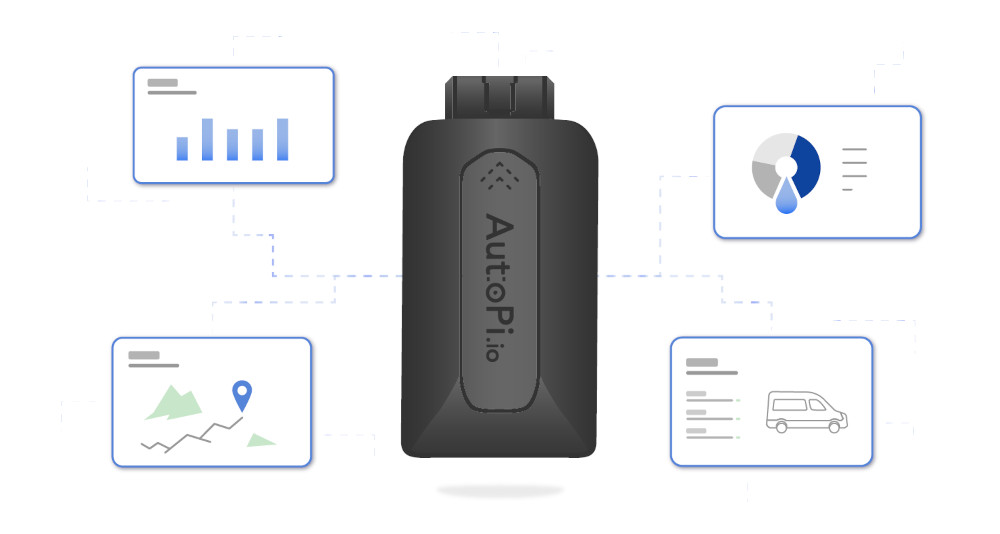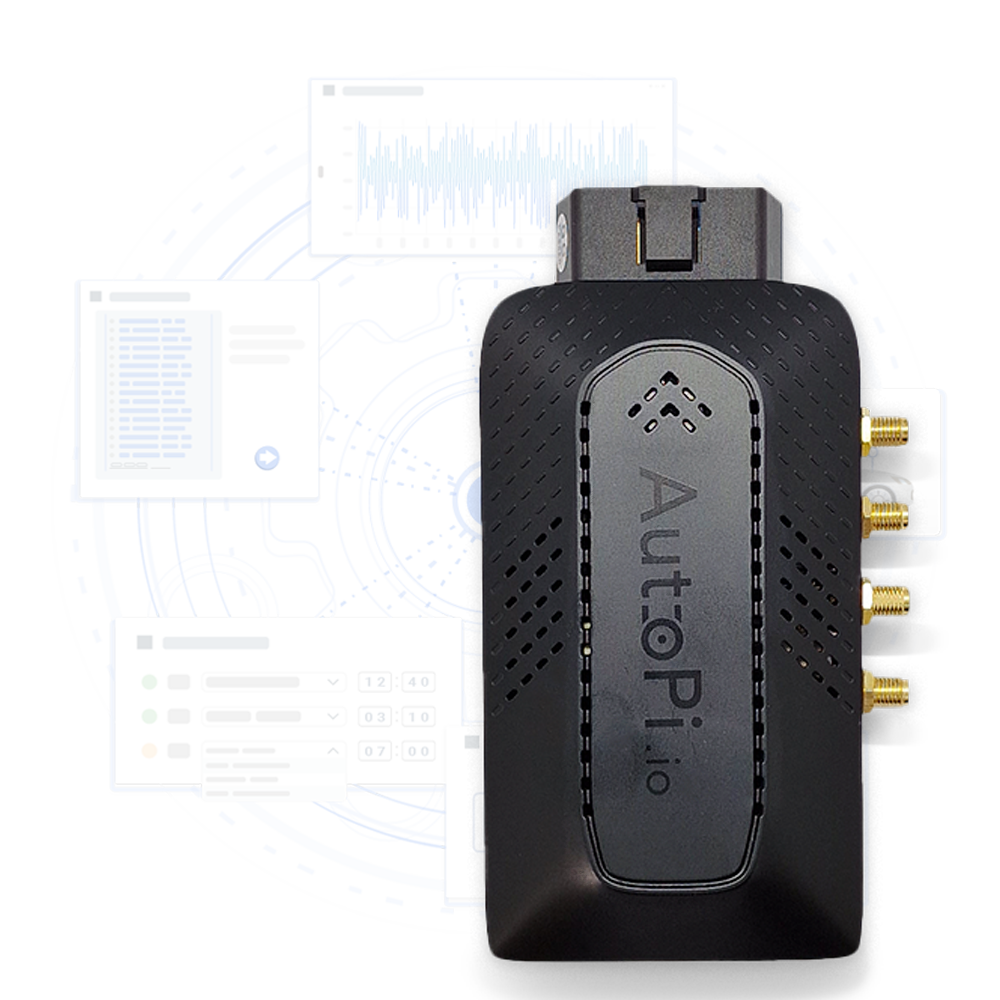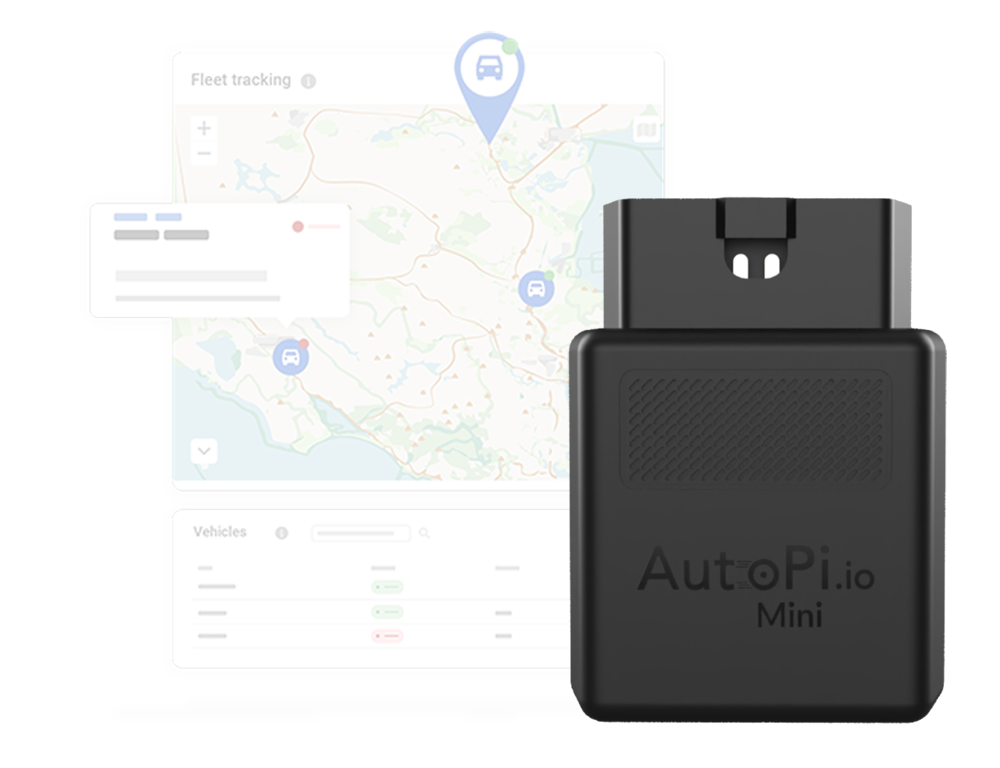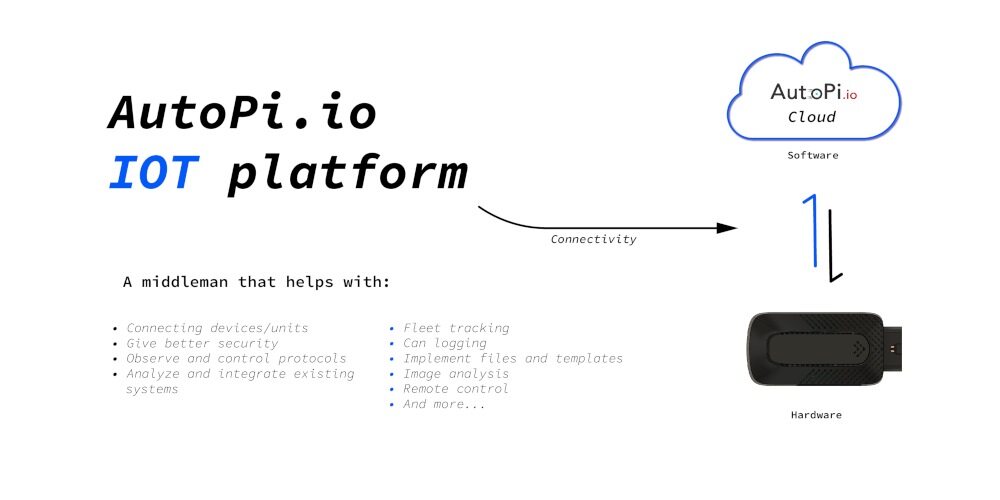Every second on the road a modern vehicle streams more data than an early Mars rover, wheel-speed pulses, GPS fixes, CAN FD frames and driver-ID tags all converge in its telematics gateway.
Within half a second that payload is encrypted, sent over 4 G / 5 G and mirrored in a cloud dashboard continents away.
Dispatchers watch incidents unfold in real time, engineers replay raw frames for diagnostics, and safety managers queue targeted coaching, no workshop visit required.
Finance updates total cost of ownership on the fly as idle minutes accumulate, while cyber-security teams push signed firmware patches overnight.
Welcome to telematics in 2025, where data moves faster than the vehicles it protects.
What is Telematics?
Think of telematics as a smart computer right in your car that keeps an eye on almost everything about your drive. It's what turns your vehicle into a smart device, connecting you better to the road and beyond.
Telematics Definition
Telematics combines telecommunications and computer science to collect and send data about your car. This information, or telematics data, is recorded via a small telematics device, also called a black box, that plus into the OBD-II port. It powers useful features like real-time traffic updates, quick help during emergencies, and tailored insurance rates based on how you drive.
This tech isn't just about keeping you safe, it also boosts your car's efficiency. With telematics you're always in the loop about how your car is performing, whether it's fuel efficiency or the best routes to avoid traffic. It can even spot potential problems before they leave you stranded. It's how Tesla get data from their cars.
As this technology gets even smart, it's paving the way for cars that are more automated and connected. While there is no fully automated vehicles for sales right now, however, one thing is clear, we're only getting closer to a level 5 automation.

How Does Telematics Work?
Telematics relies on a carefully orchestrated blend of hardware and software. Together those layers turn an ordinary vehicle into a connected node that can report health, location and driver behaviour in real time, making modern fleets smarter and more efficient.
Telematics Hardware Components
At the heart of every system is the Telematics Control Unit (TCU), a rugged hub that ties the vehicle’s sensor network to the outside world. A dedicated GPS module streams latitude, longitude and speed; the OBD-II port feeds engine temperature, fault codes and fuel data; inertial and pressure sensors log acceleration, braking and tyre events; and an embedded cellular modem encrypts everything before pushing it to the cloud.
Telematics Software Components
Once the data reaches the back end, processing algorithms clean and normalise each record, while machine-learning models scan for anomalies that could signal mechanical problems or risky driving. Results surface through dashboards and mobile apps that let technicians schedule maintenance, managers review fuel KPIs and drivers see instant feedback on route efficiency.
Data Collection
Collection is continuous: the TCU packages sensor readings, tags them with GPS coordinates and cellular time stamps, then forwards the payload over an encrypted link. If an engine overheats, the packet that describes the temperature spike also carries vehicle position and driver ID, allowing maintenance teams to respond before damage escalates.
Data Processing and Analysis
In the cloud the raw feed is distilled into actionable services. GPS traces build live maps and ETA forecasts; CAN and OBD diagnostics trigger proactive repair orders; behaviour metrics highlight harsh braking or speeding so safety coaches can intervene early.
Practical Applications
Those insight streams translate directly into value: automatic crash notifications relay location and impact data to first responders within seconds; rolling health reports extend vehicle life by flagging problems before they strand a driver roadside; and real-time traffic overlays reroute journeys to cut idle time and fuel burn.
Example: GPS Tracking
In a telematics-equipped van the GPS receiver logs a fix every second, sends it through the modem and renders it on a dispatcher’s map almost instantly, enabling turn-by-turn navigation, geo-fencing alerts and rapid theft recovery.
Example: Automated Emergency Services
Should a severe collision occur, onboard accelerometers trip a threshold, the TCU dials an emergency API and delivers coordinates, speed and crash vectors to rescue teams, shaving critical minutes off the response and improving outcomes.

History of Telematics
The story of telematics is one of remarkable technological progress, combining telecommunication and informatics to revolutionize vehicle technology.
Early Beginnings
-
1960s-1970s: It all started in the military and aerospace sectors for navigation and tracking, using early telecommunication and informatics technologies.
-
1980s: Telematics moved into civilian use, especially in fleet management with basic GPS tracking.
The Rise of GPS and Cellular Networks
-
1990s: GPS became commercial, and better cellular networks allowed real-time data transmission. This powerful mix of telecommunication (GPS and cellular networks) and informatics (data processing) expanded what telematics could do.
-
1996: The U.S. government made GPS available for everyone, boosting the use of telematics.
Integration with Automotive Technology
-
Early 2000s: Car makers started adding telematics for navigation and emergency help, integrating telecommunications and informatics more deeply into vehicles.
-
Mid-2000s: Telematics began using onboard diagnostics (OBD) for real-time vehicle health checks.
Modern Developments
-
2010s-Present: Now, telematics uses IoT, machine learning, and big data for advanced features like driver behavior insights and predictive maintenance.
-
Electric and Autonomous Vehicles: It plays a crucial role in the growth of electric vehicles and self-driving cars, enhancing safety and efficiency.
By combining telecommunication and informatics, telematics has evolved from military roots to a key technology in modern vehicles. This combination drives innovation and shapes the future of travel.
Stay Ahead with AutoPi: The Next Step in Telematics
Telematics has come a long way, hasn’t it? It's wild how much things have changed. Here at AutoPi, we're really excited to be part of it all. Connecting your fleet to smart tech isn’t just a nice-to-have anymore, it’s really important for businesses who want to save time, cut costs, and stay on top of safety.
That’s where AutoPi comes in. We’ve got a few devices that can make all of this much easier for you.
AutoPi Can FD Pro, TMU CM4, and Mini Devices
AutoPi Can FD Pro: If you’re running a business that needs detailed vehicle data, the AutoPi Can FD Pro is the one. It tracks everything from fuel efficiency to engine health, helping you avoid surprises and keep things running smoothly. Perfect for companies that need more in-depth insights into their vehicles.


AutoPi TMU CM4: For fleet managers, the AutoPi TMU CM4 is a real game changer. It tracks your drivers, your vehicles, and your routes, giving you data to help save on fuel, predict maintenance, and keep your fleet running like a well-oiled machine.
AutoPi Mini: If you just need something simple, the AutoPi Mini is your best bet. It’s small, easy to install, and covers the basics, GPS tracking and vehicle health. It’s perfect for smaller fleets or businesses just starting to explore telematics.

Pros and Cons of Telematics
Telematics have a lot to offer but come with some challenges too. Here's a look at the pros and cons, including for fleet telematics.
| Aspect | Pros | Cons |
|---|---|---|
| Safety |
- Real-time alerts for quick action - Automatic emergency response |
, |
| Efficiency |
- Fuel management to reduce costs - Maintenance alerts to prevent breakdowns |
, |
| Driver Behavior Monitoring |
- Tracks and analyzes driving habits - Provides feedback and incentives for safer driving |
- Privacy concerns with data collection - Potential driver discomfort |
| Cost Savings |
- Reduces fuel and maintenance costs - Insurance benefits from lower premiums |
- High initial setup costs - Ongoing subscription fees |
| Privacy and Security | - Introduced blockchain that can enhance data security and transparency |
- Constant monitoring can feel intrusive - Data security risks require strong protection measures |
| Complexity and Maintenance | , |
- System integration can be complex - Regular maintenance and updates are necessary |
| Driver Dependency | , | - Risk of drivers becoming too reliant on telematics systems, potentially reducing driving skills |
After examining the pros and cons, you can see how each aspect balances out. To make a well-informed decision, consider assigning weights or scores to each pro and con. This can help you calculate the net value of each option.
Ultimately, choose the option that has the most pros and the fewest cons, while also aligning best with your goals, values, and preferences. This approach ensures that you select a telematics system that meets your needs effectively and supports your objectives.
Fleet Telematics
When it comes to fleet telematics, the benefits and challenges are quite specific. Here's a closer look at the pros and cons of fleet telematics:
| Aspect | Fleet Telematics Pros | Fleet Telematics Cons |
|---|---|---|
| Efficiency |
- Better route planning - Enhanced operational efficiency |
- Managing and analyzing large volumes of data can be overwhelming |
| Safety |
- Improved driver behavior monitoring - Real-time alerts |
, |
| Cost Savings | - Lower operational costs | , |
| Driver Resistance | , | - Some drivers might resist using telematics, feeling it invades their privacy or adds pressure |
While fleet telematics can greatly enhance efficiency, safety, and cost savings, it’s important to be aware of the potential challenges, such as data management and driver resistance. Weighing these pros and cons can help fleet managers make informed decisions about implementing telematics in their operations.
Ultimately, the benefits of fleet telematics often outweigh the drawbacks, especially when managed effectively and aligned with organizational goals and values.
Telematics Devices
At the core of every connected-vehicle stack is a mix of specialised hardware that captures location, health and driver behaviour in real time. A basic installation starts with a GPS tracker that logs latitude, speed and route history, making it invaluable for navigation, theft recovery and proof-of-delivery. Plugging an OBD-II dongle into the diagnostic port adds engine load, fuel-rate and fault-code data, so maintenance teams can schedule work before a breakdown and trim excess fuel burn. When deeper insight is needed, fleets step up to a full Telematics Control Unit (TCU); this rugged box combines multi-band GPS, cellular modem and CAN / LIN interfaces, aggregates every sensor in the vehicle and ships the payload to the cloud in seconds. Many operators pair the TCU with an inward- and outward-facing dash-camera so a video clip accompanies every harsh brake or collision alert, giving safety managers irrefutable context. Large fleets wrap all of these feeds inside a fleet-management platform that stitches location, diagnostics and driver scorecards into one dashboard, simplifies compliance reporting and pushes over-the-air updates to thousands of vehicles overnight.
Importance of Telematics Devices
These devices turn raw vehicle signals into actionable intelligence. Continuous data flow lets dispatchers reroute around congestion, alerts a driver the moment tyre pressure drops, and proves regulatory compliance with a click. Real-time insight into fuel rate and idle time routinely saves five to ten percent on operating costs, while stored video and fault logs accelerate insurance claims and warranty repairs. In short, telematics hardware is the backbone that makes modern vehicles, and entire fleets, safer, greener and far more predictable to operate.

Integration of Telematics in Modern Vehicles
Telematics is now woven deep into the digital fabric of the modern vehicle, talking fluently with infotainment, safety and power-train subsystems. In the dashboard, live traffic feeds merge with GPS navigation so the route vector you follow constantly adapts to congestion and roadworks; the same uplink can raise an SOS if an accident disables the driver. Advanced Driver-Assistance Systems harvest those data streams as well, lane cameras, radar returns and CAN speed messages flow into a single decision engine that nudges the wheel when the car drifts or tightens cruise control to match traffic. Electric platforms lean even harder on telematics: battery-management units push state-of-charge to the cloud, the cloud returns charger availability, and the vehicle plots an energy-aware route that avoids range anxiety altogether.
Seamless Integration with In-Car Systems
Infotainment. Beyond music and maps, today’s head units subscribe to real-time traffic, weather and
parking feeds gathered by the telematics control unit; fewer jams and detours translate into measurable fuel savings
and happier passengers.
ADAS. Collision-avoidance radars, lane-keeping cameras and adaptive cruise modules share bandwidth
with the TCU; telematics enriches those inputs with high-precision GPS and crowd-sourced hazard reports so the car
responds sooner and more accurately.
Electric drive. For an EV the same pipe monitors battery health, books the next DC fast-charger and
pre-conditions the pack so charging begins at peak efficiency the moment the cable is plugged in.
Benefits of Integration
When every subsystem communicates, the benefits compound. Vehicles begin to talk to junction beacons and traffic lights, Vehicle-to-Everything connectivity, that trims idle time and slashes urban emissions. Continuous data feeds let engineers refine calibrations long after the car leaves the factory, so over-the-air updates unlock efficiency and new features without a workshop visit. The same telemetry backbone underpins autonomous driving pilots: centimetre-level maps, object recognition and V2X alerts converge to steer safely through complex traffic. In commercial fleets, managers watch trucks in real time, reroute on the fly and coach drivers with the exact metrics that save fuel and reduce wear.
Future Trends
Expect telematics to lean harder on artificial intelligence for predictive maintenance and hyper-personalised interfaces; V2X bandwidth will swell as 5G sidelink rolls out and smart-city infrastructure matures; and zero-trust security models will harden data privacy, ensuring that the torrent of vehicle data remains both useful and safe. With each software release the line between vehicle and network blurs further, making driving cleaner, safer and more connected than ever before.
Conclusion
Telematics has changed the way we manage our vehicles. It provides real-time data, boosts safety, and improves efficiency. From GPS trackers to advanced fleet systems, telematics makes cars smarter and more connected.
Telematics offers many benefits, like better fuel management and safer driving. But it also has challenges, such as data privacy and high setup costs. Knowing these pros and cons helps you make smart decisions about using telematics.
The future of telematics is exciting with new advancements in AI and connectivity. Whether you're a car owner or manage a fleet, telematics can help you optimize your driving and operations.
Ready to see how telematics can help you? Contact us today to learn more about our telematics solutions. Get in touch with us now.







